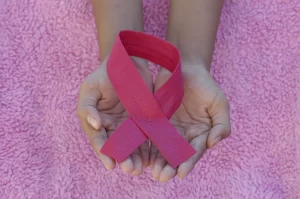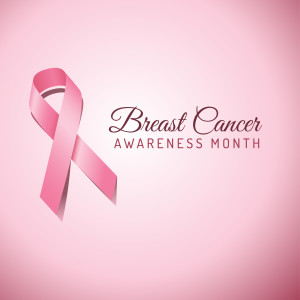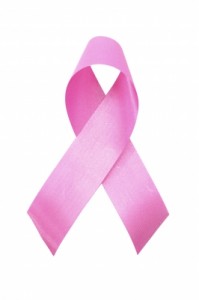By Iris Farrou
05 Oct, 2022
Breast health, Lifestyle Tips, Prevention, Queer Health, Women's Health, Young adults & teens
Best OBGYN Groups in Buffalo, Breast cancer, Breast cancer awareness, Breast cancer awareness month, Buffalo OBGYN, cancer charity, mammogram, When do I need a mammogram
October is best known as the month dedicated to spooky costumes and candy, but it is
also the month dedicated to Breast Cancer Awareness. Apart from skin cancers, breast cancer is
the most common one among American women. Facts show us that 1 in 8 women in the US will
receive a diagnosis of breast cancer in her lifetime, but the really good news is that 65% of cases
are diagnosed at a localized state–meaning that the cancer has not spread past the breast–for
which the five-year survival rate is 99%.

It is also encouraging to hear that there are over 3.8
million breast cancer survivors in the United States alone. The positive facts about breast cancer
assure us that science is working hard to enhance the survival rate for women who are diagnosed
with breast cancer, and is also making great strides to provide successful preventative
techniques.
During the month of October, there are continued efforts to fundraise money for
dedicated breast-cancer research, to support survivors, and to spread awareness and information
to younger women. If you are in Buffalo, NY you may want to consider participating in the
annual Making Strides of Buffalo walk, which is dedicated to making an impact and saving lives,
organized by Roswell Park Comprehensive Cancer Center. This year, the event takes place on
October 22nd, and you can easily sign up for the event on the American Cancer Society’s
website. The event does not have a registration fee, so it is accessible to a greater number of
people.
If you cannot attend the event in person, you can also make a donation, and keep
fundraising going by looking into the Matching Gifts programs: many employers will match
their employees’ charitable donations, or even volunteer hours, thus doubling the impact
individuals make on Breast Cancer Awareness! You can find out directly from your employer if
they are registered for a matching gifts program, or you can use the tool provided by Double the
Donation.
Another great way to support research and other initiatives toward Breast Cancer
Awareness is to create your own fundraising events; many tech-savvy folks set up their own
fundraising pages, or they simply ask their loved ones to collect donations towards this cause in
lieu of birthday, wedding, or anniversary gifts. If you have an online presence, you can easily
bring people together through Facebook or Instagram Live, and even Zoom, to provide support,
share knowledge, and build a community.
Breast Cancer Awareness Month
https://www.bcrf.org/breast-cancer-awareness-month-ideas-fundraising/
More
 Last week, actress Julia Louis-Dreyfus announced she has breast cancer in a post on her official Twitter account saying, “1 in 8 women get breast cancer. Today, I’m the one”.
Last week, actress Julia Louis-Dreyfus announced she has breast cancer in a post on her official Twitter account saying, “1 in 8 women get breast cancer. Today, I’m the one”.
According to the National Breast Cancer Foundation, one in eight women in the United States will be diagnosed with breast cancer in their lifetimes. While we have made significant strides in breast cancer treatment options, the safest way to protect yourself from this deadly disease is through awareness and early detection. As we spend the month of October wearing pink ribbons and reflecting on those we’ve lost, and those who have persevered, take the time to familiarize yourself with the latest breast cancer screening guidelines. By following a regular routine of administering self-exams, and receiving recommended screenings from your OBGYN, you will put yourself in the best position to help us continue the fight against breast cancer.
Breast Cancer Screening Guidelines
According to the American Cancer Society, the frequency with which women should obtain a breast cancer screenings from their OBGYN is dependent upon age. More specifically:
- Women ages 40 to 44 are recommended to receive a mammogram annually if desired.
- Women ages 45 to 54 are recommended to receive a mammogram annually.
- Women 55 and older are recommended to receive a mammogram every two years but may continue to receive annual screenings if desired.
Regular Self-Exams
In addition to mammography screenings, women should also perform routine self-breast exams. Regular self-examinations help women ensure they are familiar with their breasts so that if any abnormality develops, they can identify the change and make an appointment to be examined by a doctor.
Family History
Women with a personal, or a family history of breast cancer are recommended to receive more frequent screenings. If your mother, sister(s), or grandmother(s) have been diagnosed with breast cancer, talk to your OBGYN. He/she will help you determine when to start receiving regular mammography screenings, and whether or not an MRI is also advisable to test for abnormalities.
Other Risk Factors
In addition to your family history, your doctor will need to have an understanding of other factors that could increase your risk of breast cancer and that may impact when you should begin receiving breast cancer screenings, and with what frequency. Such risk factors may include:
- Your age. A woman’s risk of a breast cancer diagnosis increases with age, particularly up until age 50.
- Childbearing history. The older a woman is when she has her first child, the greater her risk of developing breast cancer in her lifetime. Women who never have children are also at a greater risk of developing breast cancer.
- Menstruation history. Women are at a higher risk of breast cancer if they menstruated for the first time before age 12 or if they go through menopause after age 55.
- Genetic factors. Women with a mutation in the BRCA1 or BRCA2 genes are at a higher risk of developing breast cancer.
If you have any questions or concerns regarding your personal risk of breast cancer, talk to your OBGYN. He or she will be able to discuss your personal risk factors and will help you to determine a routine screening frequency plan that is right for you.
More
 One in eight women will be diagnosed with breast cancer in their lifetime, according to the National Breast Cancer Foundation, Inc. Look around your office, your family gathering, or your next social event and consider the fact that 13 percent of the women in the room will be diagnosed with breast cancer in their lifetime. You may already be able to name family members, friends, and co-workers who have bravely faced a positive diagnosis. The reality that breast cancer has on the women in our lives is staggering.
One in eight women will be diagnosed with breast cancer in their lifetime, according to the National Breast Cancer Foundation, Inc. Look around your office, your family gathering, or your next social event and consider the fact that 13 percent of the women in the room will be diagnosed with breast cancer in their lifetime. You may already be able to name family members, friends, and co-workers who have bravely faced a positive diagnosis. The reality that breast cancer has on the women in our lives is staggering.
In October we honor the victims and survivors of this devastating disease by acknowledging Breast Cancer Awareness Month. However, thirty days every year doesn’t seem like nearly enough time to spend recognizing the impact of breast cancer, especially when you consider that each year over 246,660 women in the United States will be diagnosed with breast cancer, and more than 40,000 will die.
Every month should be breast cancer awareness month. Every month we should honor those we have lost, support those in treatment, and teach the young women in our lives how to lower their risk of being diagnosed in their lifetime. To help you to reduce your own risk of breast cancer, this October, and every month, remember to conduct a breast self-exam. According to breastcancer.org, 20 percent of diagnosed breast cancers are found through a physical exam, rather than by a mammography. To help you to remember to conduct your monthly self-exam, follow these tips:
- Pick a day and stick to it. Choose one day every month for your self-exam and stick to it. Choose a day that’s easy to remember like the first of the month, or a few days after your period ends.
- Buddy-up. Ask a family member or friend to be your self-exam buddy and work to remind one another each month to perform your exams. Holding one another accountable will help ensure you each complete this potentially life-saving task each month.
- Write it on your calendars. All of them. If you’re like most busy multi-tasking women, you have more than one calendar helping you to stay organized. Add your breast self-exam reminder to all of your calendars, including your work calendar, smart-phone calendar, desk agenda, and family planner. When you see reminders in multiple places, a task becomes impossible to ignore.
- There’s an app for that. There are a variety of free Apple® and AndroidTM mobile apps that can help remind you to perform your breast self-exam each month. Pick the app with the features that best meet your needs.
- Sign-up for an email reminder. If you prefer to have your task reminders pop into your inbox, sign-up for a monthly breast self-exam reminder from the Maurer Foundation or cancer.org.
This October, make a promise. Make a promise to yourself and to all the women in your life that you will keep breast cancer awareness and prevention top of mind not just in October when we are surrounded by pink ribbons and advocacy walks, but all year long. With a perpetual focus on the importance of preventing and treating this disease, we face the best odds of reducing our number of annual victims from 40,000 to zero.
More
 October is breast cancer awareness month. Throughout this month, Chouchani, Sayegh and Bagnarello MD will be posting articles about breast cancer prevention and what to do post diagnosis. This week we are focused on early detection.
October is breast cancer awareness month. Throughout this month, Chouchani, Sayegh and Bagnarello MD will be posting articles about breast cancer prevention and what to do post diagnosis. This week we are focused on early detection.
Breast cancer is a disease that occurs when malignant (bad) cancer cells form in the tissue of the breast. One in eight women will be diagnosed with breast cancer during their lifetime and breast cancer is the most commonly diagnosed cancer in women. While breast cancer is the second leading cause of death in women, it can also occur in men with an estimated 2,150 men diagnosed per year.
However, according to the National Cancer Institute, when detected early in the “localized stage,” the five-year survival rate for breast cancer is 98%.
Early detection is easiest when you know the signs and symptoms of breast cancer while also performing regular self-exams.
Signs and symptoms to watch for:
- Nipple tenderness
- Thickening lump in the breast or underarm area
- Change in the skin around the breast or nipple, or enlargement of the skin’s pores
- Lump in the breast or a change in the shape or size of the breast
- Dimples anywhere on the breast
- Unexplained swelling or shrinkage of the breast (especially limited to one side)
- Nipple turned inward or inverted
- Red, swollen or scaly skin around the breast, nipple or areola
- Any clear or bloody nipple discharge
Most people experiencing signs and symptoms will only experience two or three and that does not mean they automatically have breast cancer. If you are experiencing any of the signs or symptoms, or feel any sort of unexplained lump in the breast or armpit area, contact your physician immediately.
Self-exams are extremely important especially concerning early detection. For further instruction on performing self-exams, see a previous article here, or you can find more information on the website for the National Breast Cancer Foundation here. Self-exams should be performed at home about once a month.
A clinical exam can be performed by a healthcare professional in-office during an appointment or during an annual exam or physical. Healthcare professionals will check the breast and armpit for lumps while also checking the skin for abnormal coloration, texture or discharge.
Mammograms are conducted by taking an x-ray of the breast tissue to examine the tissue for suspicious clusters, flecks, growths etc. Women over 40 should have a mammogram every one to two years, while women under 40 with risk factors should ask their healthcare professional what’s best.
The National Breast Cancer Foundation also offers an Early Detection Plan which is available for iPhone and Android on the App Store and on Google Play. The EDP reminds users to do monthly self-exams with notifications on their phones, tablets or computers and also aids in scheduling clinical breast exams and mammograms. For more information, visit their website here.
Reducing the risk of breast cancer can be as simple as maintaining a healthy weight, staying physically active, maintaining a healthy diet, and limiting alcohol and tobacco consumption. Early detection leads to the greatest possibility for efficient and successful treatment.
For more information on breast cancer, visit our patient education section here. And if you’d like to make an appointment with any of our doctors, please give us a call today. We are accepting new patients in all three of our offices in Western New York!
More



